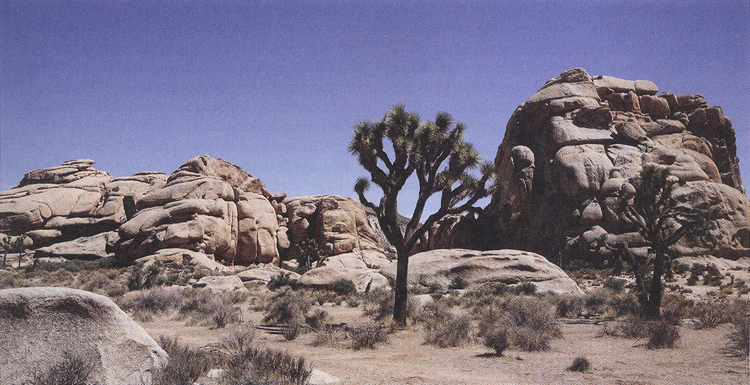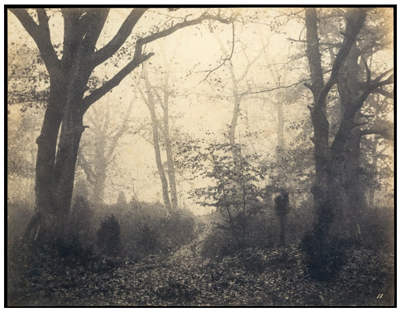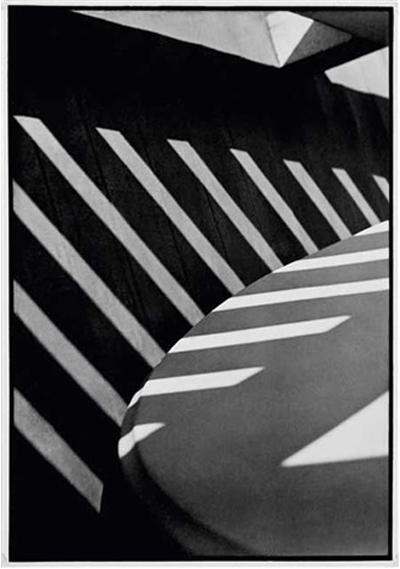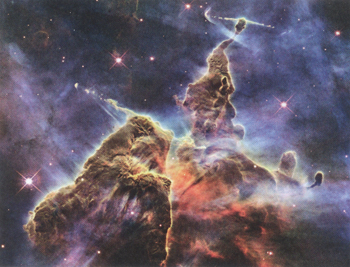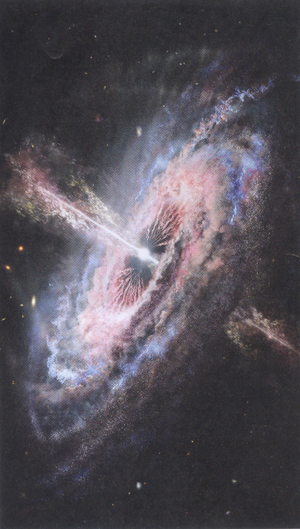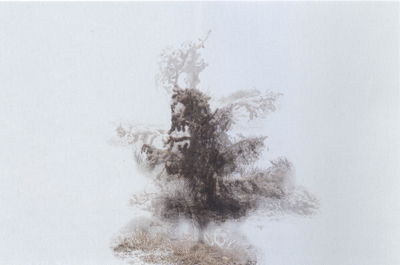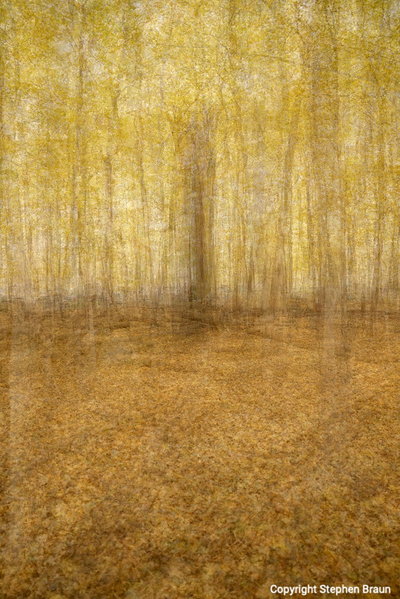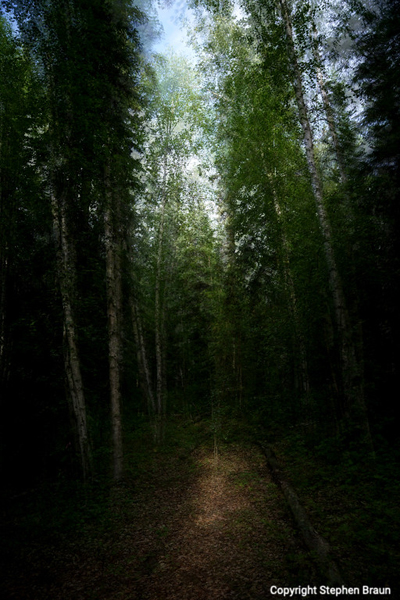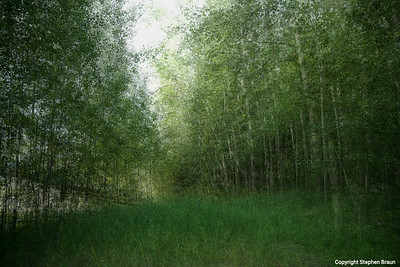Printed in the Summer 2022 issue of Quest magazine.
Citation: Hartmann, Franz, "H.P. Blavatsky: The Sphinx of the Nineteenth Century" Quest 110:3, pg 35-41
By Franz Hartmann
Translated from the German by Robert Hütwohl
Franz Hartmann (1838‒1912) was a German physician and Theosophist who was a close associate of H.P. Blavatsky. For more about Hartmann, see Susanne Hoepfl-Wellenhofer’s article, “Franz Hartmann: A Pioneer of the Theosophical Movement,” in Quest, winter 2022.
This article is a translation of “H.P. Blavatsky. Die ‘Sphinx’ des 19. Jahrhunderts” (“H.P. Blavatsky: The ‘Sphinx’ of the Nineteenth Century”), originally published in Lotusblüten 1, no. 7 (April 1893), 305‒40. This article was reprinted as “H.P. Blavatsky,” Theosophischer Wegweiser (Calw, Germany: Schatzkammer-Verlag, n.d.), 93‒96, 125‒27, 148‒51. It was republished as Helena Petrowna Blavatsky, die Sphinx des 19. Jahrhunderts. Calw-Wimberg, Germany: Schatzkammerverlag Hans Fändrich, n.d. Translation copyright ©2022 by Robert Hütwohl.
Some details in this article misstate certain biographical facts about HPB. We have left them intact as Hartmann wrote them.
The restoration of the true spiritual church cannot be accomplished by human effort and human wisdom, but solely by the manifestation of the spirit of truth within humanity.
One of the most significant appearances of this century, and probably the strangest of all, was that of Helena Petrovna Blavatsky, née Hahn. She was the soul of the Theosophical Society, founded by her in collaboration with Colonel H.S. Olcott and others, which spread its branches over the whole earth in a relatively short time.
But this is probably the least of their merits. The main point is that the doctrines revealed by her and spread by her disciples have brought about a major change in the general worldview. This shift is taking place in all areas of religion, science, and philosophy, and is ever increasing. There is no doubt, therefore, that H.P. Blavatsky’s name will sooner or later find its due place in world history. The encyclopedia of conversation will contain as many lies about her character as it does about Cagliostro, Paracelsus, and other characters who were not understood by their contemporaries because they were above the mindset of their time. A noble soul can only be known and understood by noble souls; wickedness sees nothing in the noblest but its own image. Just as it is the destiny of every great mind to be misunderstood, ridiculed, and maligned in this foolish earthly world, so too was the case with Blavatsky. The ideals she presented were far too lofty for the narrow, vain, and selfish to comprehend, and every tiny newspaper writer thought himself entitled to judge them, though he had not the slightest idea what they were.
She was persecuted and betrayed throughout her life, and occasionally after her death. One begins to recognize her high spirit and the philanthropy which permeated her. The “pious” are beginning to realize that what she taught is identical with the teachings of the wisest among the saints of the church, and that they are never against true religion, but only against the rubbish adhering to it, against what religion claims to be but actually is not.
The philosophers who are capable of recognizing the spirit of the teachings declared by the philosophers of India begin to realize that without their own possession of this truth, all so-called knowledge is but a dream, a blind speculation and hiding in the dark.
As for modern science, insofar as it relates to the investigation of the nature and essence of man, it too begins to awaken from slumber, rub its eyes, and find that there are things of which it is so far unable to make out any idea.
For all of this, we must primarily thank the suggestions of H.P. Blavatsky, although some now adorn themselves with her feathers but are hostile to her memory and bring her proclamations onto the market under a different name as their own product.
Today the light whose condensing lens was H.P. Blavatsky enlightens some places where only a few years ago Egyptian darkness prevailed. Instead of knowledge based on mere hypotheses and theories, true and original knowledge has begun to take hold, which, unlike the scholasticism of former times, does not refer to mere appearances, but to the core of truth which pervades everything.
Blavatsky was a creature of whom it is not possible to form an even remotely accurate concept by hearsay alone; her talents were of a kind that is seldom found, and the wild rumors spread about them were likely to arouse suspicion. Anyone who personally came upon her could, unless he had a bias, only speak of her with admiration. For those who cannot comprehend the mysteries of inner human nature, she must remain a riddle; but for those who were able to penetrate into the sphere of their own thoughts and feelings, their soul was an open book of which nothing was hidden. A poet of modern times admirably says:
There are two natures in every person.
One is a child of daylight,
It shows traces of the sun everywhere,
There is nothing dark and nothing obscure.
You can see through them to the core,
You do not find anything strange, there is no riddle,
There is insight, clarity and trust,
It is crystal clear, simple, clear as day.
The other is as though it was born out of the night,
You do not know them and no one is measuring them;
Inspection and reason shall be defiled against her,
She is a strange guest within her own house.
Intangible, she throws into the realities
Her flickering and mad play of shadows,
Like dreams which pass through the bright day,
Tangles the threads and hexes the target.
Learned critics have only tried to analyze the “other nature” of H.P. Blavatsky; her one simple and true nature was not apparent to those critics.
Today there are still enough people today who know nothing about Theophrastus Paracelsus except that he got physical exercise in his leisure hours by waving his sword in the air; they believe that this was his only occupation. They realize that he left only buckskin pants upon his death, but his philosophy does not exist for them.
Likewise, Blavatsky’s critics could only see the mask of her personality, since in order to know the spirit, one must be in contact with one’s own spirit. Like other human beings, Blavatsky was a person in whom a spiritual individuality manifested. The biography of this spiritual individuality includes many reincarnations, whose events are beyond our observation. But the following may perhaps give us an inkling of how such reincarnations take place.
In 1831 a wealthy lady lived in Ekaterinoslav, Russia, in great seclusion, who only socialized with a few acquaintances, including the wife of a colonel, Peter Hahn, later the mother of H.P. Blavatsky. Not much was known about her other than that she was very charitable and greatly concerned with mystical things. As a result, she was regarded by many with superstitious awe.
Although she was in the best of health, one day this lady informed some of her friends that she was about to die but would reincarnate again shortly. The next morning, she was found dead in her room, but the doctors could not find a satisfactory explanation for her sudden death. On the same morning, Helena Petrovna Hahn was born.
Whatever may be thought of it, witnesses have confirmed that when the child learned to walk, her favorite outing was to the grave of the late lady, and that the girl repeated verbatim to her mother various confidential conversations her mother had had with that lady before Helena was born. It has been asserted that this spiritual individuality was an Indian in a still earlier incarnation, but such speculations have no further value. If we mention them at all, it is only to alert the reader to the possibility of such reincarnations and the fact that they can be remembered.
Helena’s father was the already mentioned Colonel Peter Hahn, and her mother was née Helene Fadeyev, a niece of the privy councilor Andrei Fadeyev and Princess Helene Dolgoruky. Relatives relate the strangest things about her youth, for which “exact” science has no explanation and with which our scholars will most readily come to terms with by regarding them as invented.
Several anecdotes relating to this can be found in A.P. Sinnett’s Incidents in the Life of Madame Blavatsky. Here we only emphasize that she was clairvoyant from an early age. For example, a murderer hidden in a haystack was once discovered using her information. This feat cost her father a large amount of money to appease the Russian police, who of course assumed that if Colonel Hahn had not known about the murder himself, such a discovery could not have taken place.
Little Helena seemed to be served by invisible forces. Objects she desired but could not reach, came to her, carried by invisible hands; she read the minds of those present like an open book; and prophesied events came true later. She was indeed a prodigy, an object of admiration and to the superstitious, of fear.
Since she was a Russian by birth, her nature had various peculiarities particular to the Russian nation, especially a high degree of perseverance and willpower, which degenerated into stubbornness. There was nothing she could not achieve when she wanted it.
This quality led to her marriage to sixty-year-old General Nikifor Blavatsky, a former governor of Erivan [present-day Tbilisi] province in the Caucasus. When she was nineteen, her governess said, “You are such a stubborn thing that you can never get a man; not even old General Blavatsky would marry you”; so she wanted to show her governess that she was wrong.
Not long after, she got the general to ask for her in marriage, and soon afterwards, in 1848, the marriage took place. But when, after the wedding, he wanted to display his marital affection, her nature revolted. When he became unwelcome, she was beside herself. Knocking him to the ground with a silver candlestick, she fled on horseback in the dark of night, believing she had killed him.
But General Blavatsky was not dead; he made a full recovery but resolved that it would be better to consent to a divorce than to live any longer with so dangerous a wife. After this event, Blavatsky traveled, spending many years in Central Asia, South America, Mexico, and Africa. She met a Copt in Egypt who taught her the “secret” sciences; she visited the United States, Japan, and India and attempted to enter Tibet in 1852, but did not succeed until 1856, when she remained there for three years.
In this short sketch, it is not our intention to give a detailed description of Blavatsky’s experiences. What appears to be the most interesting period in her life, from 1867 to 1870, is shrouded in mystical darkness. At that time, as she told her confidants, her body was in Tbilisi, in a state in which her outward consciousness returned only intermittently, while her inner “I” was in Tibet, maintaining her self-conscious existence in association with her teachers. She said, “I was divided into two personalities at the time. When I left my sick body in Tbilisi, I was a person who cared nothing for H.P. Blavatsky and did not even take notice its existence. When I awoke as H.P. Blavatsky, I was what I had been before, but remembered with reverence that second person.”
We leave it to our philosophers, if they know anything about the constitution of human nature, to account for this dichotomy, or, if they know nothing of such things, to only laugh at it. Dealing with Blavatsky featured a daily series of unexplainable events. For example, the writer of these lines often received answers to his thoughts from her; letters were written by invisible hands on paper in front of him; and manuscripts locked in boxes were corrected in an inexplicable way.
Once, for example, I was sitting in a corner of the room while Blavatsky was busy writing in another corner. I wondered what had become of one of my friends who had died in America. Blavatsky handed me a piece of paper, on which, while I had been thinking, she copied a well-chosen portrait of my friend, Mrs. K.W., as she lay in death. Beside it stood a strange-looking elemental, which seemed to await the departing astral body of the dying person, while the entrance of the spirit into the divine was indicated by a rainbow whose end lost itself in the sky.
Even as a child, Blavatsky wrote “ghost communications.” But one would be wrong to take her for a believing spiritualist; on the contrary, she scoffed at the spiritists’ belief in spirits and gave completely different explanations about the occurrence of such things. The following may serve as an illustration. She says:
When I was a young girl, I often saw the “ghost” of my aunt, who had moved to Germany with her son many years ago and who was believed to have died, since nothing was heard from her. This “ghost” wrote through my hand in German (which I had never learned), and in my aunt’s handwriting (which I only saw later), told us how she had died. She also gave the details of her funeral and the text which the pastor had preached on that occasion. In addition, the “spirit” of her son came and informed us that he had ended his earthly life by a suicidal hand and now deeply regrets this step, because he would have to suffer a lot. He also asked for the helpful prayers of those present. Everything was very touching, until it turned out that the aunt was alive and well in Berlin, and her son was also safely employed in a shop in London.
Blavatsky explained that once the germ of an idea has begun to develop in the mind, it develops according to a certain regularity, just as hearing a shot by a sleeping man leads to a dream about a whole murder story and may give rise to a series of consistent ideas, in which there is no truth. The brain, if not supervised by reason, works in a similar way, like a music box, which once set in motion, plays one particular piece and no other; no spirit of a dead person needs to be involved.
Such explanations were not at all to the liking of certain spiritists, who were enthusiastic about dealing with the “dear departed” and did not want to be disturbed in their sweet dreams in a fool’s paradise. So it was, that Blavatsky, while being decried as a spiritualist by the unbelievers, had the spiritualists themselves as their worst enemies, who took every opportunity to blaspheme her.
Blavatsky, for her part, fought spiritist superstition using the weapons of reason. She did not deny the “miracles” that the spiritualists marveled at but only disputed their interpretation. In all circumstances, the spiritualists ascribed these phenomena as the action of the spirits of the dead, but she explained them in a natural way. In order to prove that any person endowed with the necessary faculties, could produce these phenomena himself without the help of spirits, but since she had this talent, she produced them. For this reason, she was soon decried as a swindler by people who knew nothing of such things and did not understand why she acted this way. Among these ignorant ones were the majority of the world’s newspaper writers.
Blavatsky claimed not only to be in possession of such powers—not “supernatural,” but extraordinary—but also to be in contact with certain people, her teachers, the “Masters” or “Adepts” in Tibet and Egypt, who possessed the same and even higher spiritual powers. Indeed this seemed to be the case, since many people (including the author) frequently received “occult letters” from these teachers, who enlightened them about various subjects.
Such letters often seemed to suddenly pass from Professor Zöllner’s fourth dimension into the third dimension, that is, from the subjective world, invisible to us, into the visible objective world. They came unbidden and unsolicited, and often just at that moment when good advice was needed.
The discovery of these facts, however, gave rise to new misunderstandings. While those who were far from the matter fancied that Blavatsky was cheating her followers with sleight of hand, a multitude of devotees clung to these Tibetan Adepts, or, as they called them, “Mahatmas,” with a superstitious deification, regarding them not as men but as gods.
Among these superstitious devotees were some eminent members of the Theosophical Society, and it was precisely these who, when the storm over H.P. Blavatsky finally erupted, fled in cowardly flight, because this storm dashed the foolish idols they had created for themselves.
What Blavatsky herself thought of these conditions will perhaps be made clear by the following extract from one of her letters to the author:
Würzburg, April 3, 1886
Dear friend! Unfortunately, what you write about the mischief that is being done with the so-called “Mahatmas” is absolutely right. Haven’t I watched these follies for eight years? Didn’t I buck and fight N.’s* exaggerated fantasies, trying every day to get him to dampen his exaggerations? Wasn’t he told, as you know, that if he doesn’t see our teachers for what they really are and stops inflaming people’s imaginations with his exaggerations, he’s putting all the responsibility on himself for all evil that befalls us? Wasn’t he told even then that there were no such “Mahatmas,” who, he believes, hold Mount Meru on their fingertips and physically fly about in the air at will? I foresaw everything that would come out of his exaggerations; I have fought against it in vain, and despairing of my helplessness, I finally gave up the fight.
* In the original letter, she names Colonel Olcott. Hartmann replaced his name with “N.” so as not to offend Olcott. Further on in the same letter, HPB praises Olcott for all the good he has done. (Translator’s note.)
I was sent to America for a specific purpose. There I met N. engaged in spiritistic investigations and just as much in love with the “spirits” as he later was of the adepts. I was commissioned to show him that whatever happens in the “mediums” through their “spirits” enables others to do so. The ringing of "astral bells,” mind reading, “spirit tapping,” and the like can be accomplished by anyone without the help of “spirits” if he has the ability in his physical body through the organs of his astral body. All my family have known that I have had this ability since I was four. I could move furniture without making visible contact with it and make objects fly around in the air while my astral arms, which held those things, remained invisible.
I told N. that I met the adepts in India, in Egypt and Spain, and that they are persons who still live there today, and that calling these people “yogis,” “Rosicrucians,” or “Kabbalists” would not change the matter. These adepts were men who lived withdrawn and in quiet and did not associate themselves fully with anyone, unless one had (as I did) undergone seven and ten years of probation, and during that time had shown complete devotion and proved that one could keep silent even in the face of impending death. I fulfilled these conditions, and am—what I am.
All I have been allowed to say is that beyond the Himalayas, where there lives a core of adepts who belong to different nationalities and are known to the Teshu [Tashi or Panchen] Lama. I know several of them personally and said that they could do amazing things but that they did not dare to please the curiosity of a fool. As N. and X. [unknown] heard about these things, they became obsessed.
Then came D. [probably Damodar] and other fanatics who started calling the adepts “Mahatmas.”† Little by little, as we became friends, the adepts were turned into gods. They began to be invoked and worshiped, and made more and more fabulous and supernatural. Some Hindus imagined that these adepts were their ancient rishis, who had never died and were over 700,000 years old, that they lived invisibly in sacred trees, and when visible appeared with long green hair and bodies made of moonshine.
†Mahatmas, from maha, “great,” and atma, “spirit.” This means something like a great spirit, a high genius, and corresponds to the German expression Euer Hochwohlgeboren [“Your Highness”]. (Hartmann’s note.)
Between these madnesses on the one hand and N.’s crushes on the other hand, what could I do? With horror and anger, I saw the wrong way they took. They believed that the “masters” must be omniscient, omnipresent, and omnipotent. If a Hindu or Parsee desired a son or a job, the “Mahatmas” should help him to get it, and if it didn’t, he felt he had been wronged by the “Theosophical Society.” When any foolish thing was done, he said, “Why don’t the Mahatmas take better care of him?”
That these adepts were human beings whose fortunes might be finite did not enter the minds of their admirers. The root cause of all this ignorance lies in the general ignorance of human nature, and in the failure of modern science and religion to give people anything better, higher, and nobler than a striving for money and reputation. Put that fact on one scale, and the confusion which modern spiritism has created in many minds on the other, and the riddle is solved.
Yours, etc. H.P.B.
In this we fully agree with Blavatsky’s views. The world in general was not mature enough to understand the theosophy she proclaimed. The eyes of our scholarly world, accustomed to the darkness of ignorance, could not endure the light which spread the Adepts’ teaching; it was unable to follow the high flight of the Himalayan eagle. Unable to grasp the spirit of wisdom, it curiously sought the source from which that wisdom flowed so as to throw dirt on it.
Here the author cannot fail to add in parenthesis, that when he came to Germany in 1884, he found the same silliness and exaggerations among the members of the Theosophical Society at that time. The attempt to bring them back to the correct level failed. They wanted to believe either in supernatural miracles or in nothing at all; they wanted either ubiquitous “Mahatmas” or no teachers at all. When they realized that their wildest expectations about the adepts’ personalities were wrong, the swarm of “wisdom seekers” grabbed the banner and scattered it about like chaff in the wind. People threw the baby out with the bathwater and wanted nothing more to do with real wisdom, since the only ideal of wisdom they were looking for consisted in satisfying scientific curiosity.
Let’s go back to Blavatsky. In New York in 1875, in association with Colonel H.S. Olcott and others, she founded the Theosophical Society, whose special purpose was the study of the literary treasures of the Orient and the secret sciences. This study soon made it clear that the ancient Indians possessed knowledge of which the modern worldview does not even understand the rudiments. This fact was highlighted by the appearance of two volumes by Blavatsky entitled Isis Unveiled. This book, like The Secret Doctrine, which appeared later, contains many citations from works which Blavatsky has never seen, yet these citations are all correct—even the page numbers given—which lends credence to Blavatsky’s claim that she saw these quotations in the astral light.
Moreover, the contents of this book proved that she was initiated into the higher mysteries of Freemasonry, although, as is known, these degrees are not accessible to the female sex in the usual way.
Her revelations astounded the whole of America, and what was said about the “occult phenomena” produced by her power soon gave rise to the most outlandish rumors. Then began the persecution of the Theosophists by the part of the press which voluptuously appropriates any gossip just to deliver something sensational to its readers, regardless of any injustice done to the cause of truth. Just as the big dogs beyond the oceans barked, so the little mutts gaped by the side. Only Blavatsky herself took no part. There was nothing so untrue and silly that was not printed by newspaper writers and devoured by faithful readers. The more honorable of such papers, such as the New York Sun, later retracted the accusations they brought; other newspapers, including German ones, would be advised to do the same.
But after all, what does a person’s reputation matter? In this case, its importance lies only in the fact that such slanders may prevent those who believe them from examining and taking advantage of the doctrines which the person in question has proclaimed. This consequence confirms Blavatsky’s teaching that every act and every omission falls back on the one who commits it.
An old proverb says: “Where God builds a church, the devil builds a chapel next to it.” The more you can use a thing, the more you can abuse it. The spread of Christianity, the religion of philanthropy, had in its wake the atrocities of the Crusaders, trials of heretics, burnings at the stake, and the Inquisition. Western audiences’ glimpses of certain Eastern teachings gave rise in some places to a renewed addiction to forbidden knowledge. Some even believed that schools should be set up to teach the preparation of love potions, gold making, witchcraft, and magic.
Many a man, when he saw his wild expectations deceived, declared himself deceived. But it is not the fault of truth that it is misunderstood, nor the fault of liberty that it is misused. To prevent all the evil that could possibly arise from the spread of enlightenment, there would be no other means other than spiritual slavery, the quiet of the churchyard, which is the ideal of stupidity.
The light diffused by Blavatsky created life and threw deep shadows upon those who ventured into her sphere filled with conceit and selfishness. Yet Blavatsky had not come to bring peace to fools, but rather the sword of knowledge, which threatens to destroy foolishness.
Since the main direction of the Theosophical Society was to learn about the secret sciences of the East, it was decided to move the Society’s headquarters to India. The move took place in December 1878. Blavatsky took up residence first in Bombay and then in Adyar, near Madras. In India she was received with joy, and rajas and maharajas courted her favor. The natives regarded the members of the Theosophical Society as their liberators, as the restorers of their religion and national autonomy, which had been lost through the caste system. Colonel Olcott never grew tired of trumpeting to the world the merits of ancient Aryavartha [the abode of the aryas, or noble ones] over that of modern civilization. The Indians, for so long oppressed by Europeans and accustomed to looking up to them as demigods and objects of fear, now saw Europeans showering them with praise and courting their favors. As a result, in a short time many Indians imagined they were just as good as any European—indeed much better.
Blavatsky’s teachings—or what which was thought to be her teachings—spread rapidly in India; thousands followed Colonel Olcott’s banner. These circumstances led to a sour period for the Christian missionaries, who now saw the field of their activity as “converters of pagans” becoming smaller and smaller, so that Blavatsky’s removal became a burning existential question for them. Indeed the “pagans” began to revert from the Christian church back to Brahminism. The more the people came to know the true spirit of Christianity, the more they believed it to be found in the Buddhist community, or in Advaita philosophy, rather than in Christian sectarianism.
The missionaries’ main concern was to undermine Blavatsky’s reputation, or at least to make her unpopular, for her teaching could not be attacked without destroying her personally, since this teaching forms the basis of every religion and therefore also that of Christianity.
In order to harm Blavatsky personally, the missionaries were offered a favorable opportunity through their connection with a housekeeper of the Theosophical headquarters, who was later dismissed and with whom Blavatsky had dealt confidentially. She had carelessly written a number of letters to this person, mocking the fanaticism of some of her worshipers, calling one a “fool” and the other a “dreamer.”
Although the characteristics she gave were absolutely correct for the cases in question, it was assumed that the Theosophists whose vanity had been offended would withdraw from H.P. Blavatsky after the publication of these letters. The missionaries therefore brought forth these letters and published them with many alterations and additions.
This well-prepared publication enraged the world’s press. “Revelations” were babbled about. Perhaps never since the time when theologians argued over whether or not Adam had a navel have so much ink and paper been wasted on so insubstantial a subject as when it was imagined that the self-knowledge of truth was dependent on believing in the credibility of Blavatsky’s personality.
The missionaries’ intrigue worked to the advantage of spreading the Theosophists’ reputation throughout the world and bring new members into the Theosophical Society. Nonetheless, some who were less discerning but all the more enthusiastic and whose whole theosophy consisted in a blind faith in Blavatsky’s personality (and in a thirst for the gratification of curiosity) were misled and denied the truth before the rooster had crowed to announce the dawn of the day of knowledge.
What Blavatsky taught was something like this: “The world is caught up in a dream life or a make-believe life; true life only begins when man truly recognizes himself. Do not think that true knowledge is what you think you know, because someone else has said it is so-and-so, or because it seems so-and-so. A mere opinion, hypothesis, or theory is by no means your own knowledge. Don’t look for the truth in the multitude of opinions, but in truth itself, which is simple. Listen to the word of truth, which speaks within you, and to the voice of silence, which can only be heard when the storm of passions has calmed down. Opinions are ephemeral and changeable, but the truth revealed in one’s higher self-awareness is eternal. Strive for purity and unity so that the Spirit of Truth may manifest within you. Believe this teaching, not because I preach it, but because you know the truth of it in your heart.”
Instead of following this advice, people argued about whether the occult letters they and others had received from the adepts were genuine or not, and whether the Mahatmas really existed; otherwise one could not believe the teachings.
“Do not concern yourself with appearances, but seek true being,” Blavatsky stressed. “All that is perishable is but a parable; appearances prove nothing other than that of appearing. After all, if someone were to shake the sun to prove a lie to be true, that would prove nothing other than that the person can shake the sun, but not that the lie is the truth.”
Instead of understanding this, people argued about whether certain occult phenomena produced by Blavatsky were real or sleight of hand, and they wanted to make belief in the wisdom teachings that she proclaimed dependent on this. The headquarters of the Theosophical Society became the scene of a fool’s comedy, in which the missionaries stood in the place of the clowns. The whole world raved about the “revelations” in Adyar, although none but the initiated seemed to know what they were about.
A member of a “scientific club” devoted to mind reading and the study of ghost stories (the “Society for Psychical Research” in London) came to India to play the role of an “expert” in giving his verdict about the source of Blavatsky’s wisdom, and whether the letters she and others received from the adepts were really written by those adepts or by Blavatsky herself.
Since the adepts did not appear before him to prove their authorship to him, and since he could not measure the depth of Blavatsky’s thought with a yardstick, he found no other way of avoiding damaging his reputation as an “expert” than to declare the whole thing a fraud. He wrote a book about how he imagined that this and that could have been done by sleight of hand, but with no further proof other than that it was done that way.
Going into the details of this comedy again would be a waste of time. Suffice it to say that in view of this report, Blavatsky was unanimously declared by this association as “the greatest fraudster of the century”—a declaration trumpeted in all directions as an ipse dixit of science and preyed upon by the faithful. Nowadays, however, the opinions of most of the members of that society have changed as well.
At the time, the impression made on Blavatsky by all these suspicions was not particularly pleasant. She was ill at the time, and a consultation with eminent medical authorities determined that she could not live another twenty-four hours. Since it was known that she wished to have her body cremated upon her death, official permission for the cremation was obtained. But the following night, her health was miraculously restored, and instead of being burned, she decided to make a change of air by traveling to Europe.
A few days later, she left for Naples, accompanied by the author of these lines and a companion, lived for two months in Torre del Greco at the foot of Mount Vesuvius, then went to Würzburg, later to Ostend, and finally to London, where she founded her magazine Lucifer and completed her great work The Secret Doctrine, after receiving much of the manuscript of this work from invisible hands and in an “inexplicable” way at the above-mentioned places, as well as on board the steamer during our crossing from Madras to Naples (although the world has not heard of this circumstance until now).
Her activity in London gave rise to a new revival of Theosophical societies in England and throughout Europe. To the extent that their teachings were understood, prejudices against them declined. Although in her lifetime the booksellers of London refused to undertake the sale of her writings for fear of causing offense, today they quarrel over publishing them.
On May 8, 1891, H.P. Blavatsky died, surrounded by her friends and disciples, at the European headquarters of the Theosophical Society in London, without any particularly conspicuous antecedent ill health.
It is possible the great spirit who was so active through her personality for a long time and worked with such great success for the spiritual evolution of humanity will sooner or later appear again in a different human shell as a new herald of eternal truth.
Robert Hütwohl lives and researches in Santa Fe, New Mexico. He is currently translating a large number of Franz Hartmann’s articles from various journals into English. In 2001 Robert published Bibliography of Franz Hartmann, MD with an Addenda: His Stay in Georgetown, Colorado. He is working on a project which can only be described as “an edification towards escape velocity for chelas.” He has also been working on research concerning Atlantis and various studies on Gautama Buddha’s important text, the Kalacakra-tantra or Wheel of Time tantra, and its commentary, the Vimalaprabha.
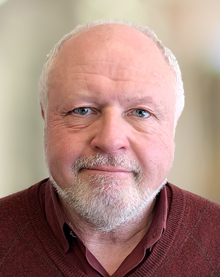 t is easier to praise beauty than to understand it. Much of the writing on aesthetics attempts to limn the elegance of a given object without really telling us why we find it so.
t is easier to praise beauty than to understand it. Much of the writing on aesthetics attempts to limn the elegance of a given object without really telling us why we find it so.

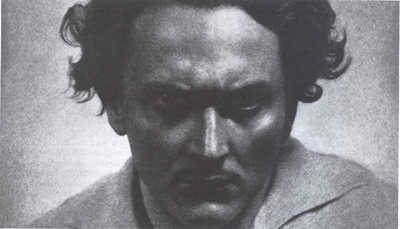 Early in his life, he became known as the author of the folio-sized, beautifully bound, and illustrated volume entitled
Early in his life, he became known as the author of the folio-sized, beautifully bound, and illustrated volume entitled 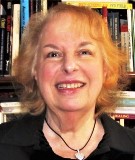 Whether in Deuteronomy, when Moses rebuked the rebellious Israelites, or multiple times throughout the Gospels, “ears to hear” refers to the capability to respond in one’s heart to the words of the Lord, or, more precisely, to be spiritually awake. What does this have to do with beauty? Everything.
Whether in Deuteronomy, when Moses rebuked the rebellious Israelites, or multiple times throughout the Gospels, “ears to hear” refers to the capability to respond in one’s heart to the words of the Lord, or, more precisely, to be spiritually awake. What does this have to do with beauty? Everything.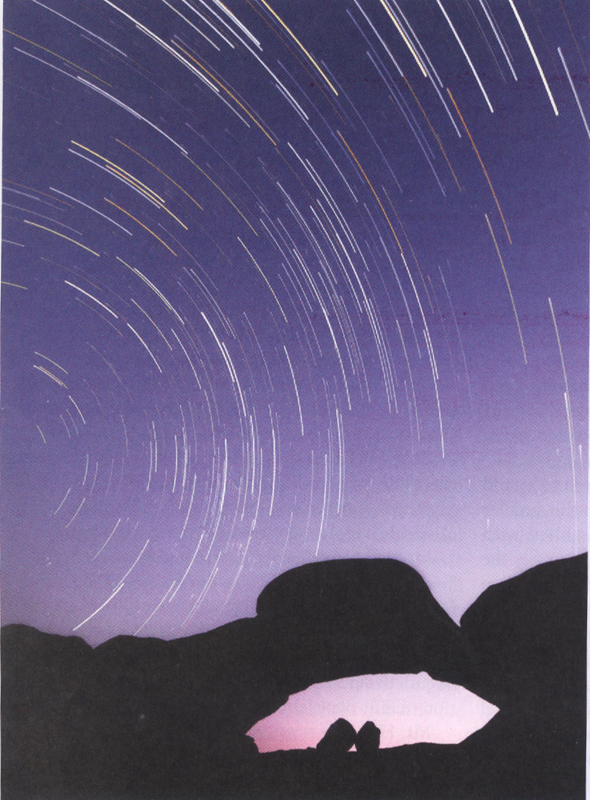
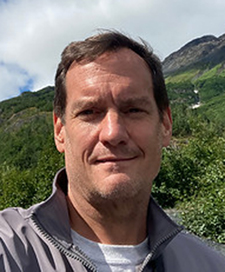 A very specific quest for beauty started in the Mojave Desert, in the part of that desert where the Joshua trees grow. It started ten years ago, when I first experienced them. I have always loved trees, but those captured my heart and attention like no others.
A very specific quest for beauty started in the Mojave Desert, in the part of that desert where the Joshua trees grow. It started ten years ago, when I first experienced them. I have always loved trees, but those captured my heart and attention like no others.